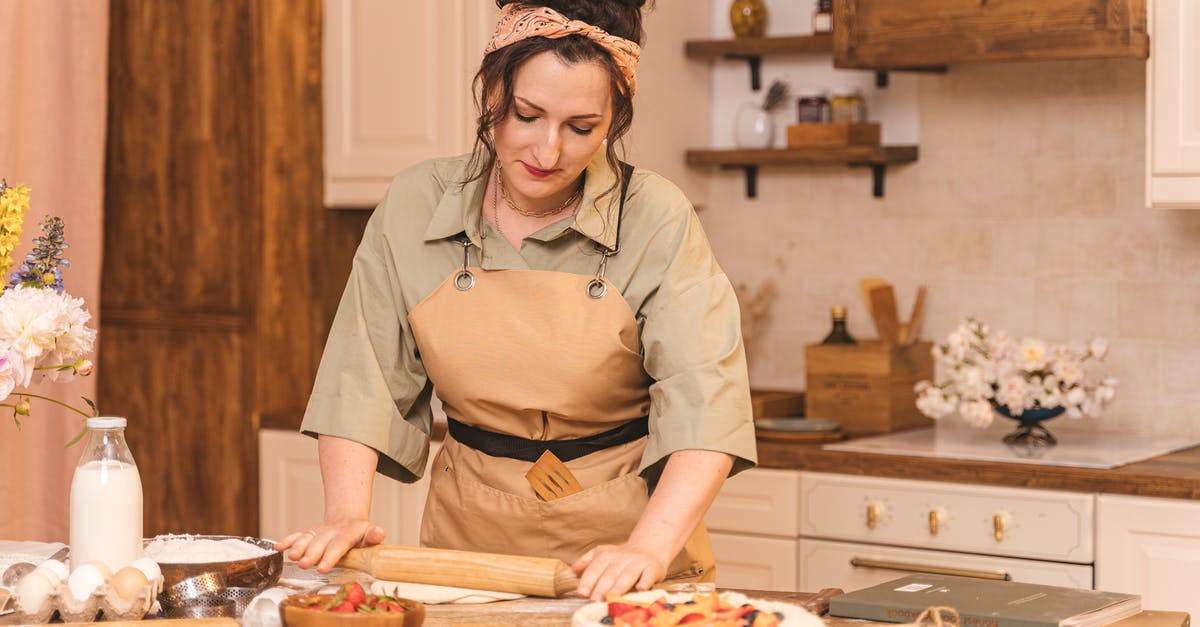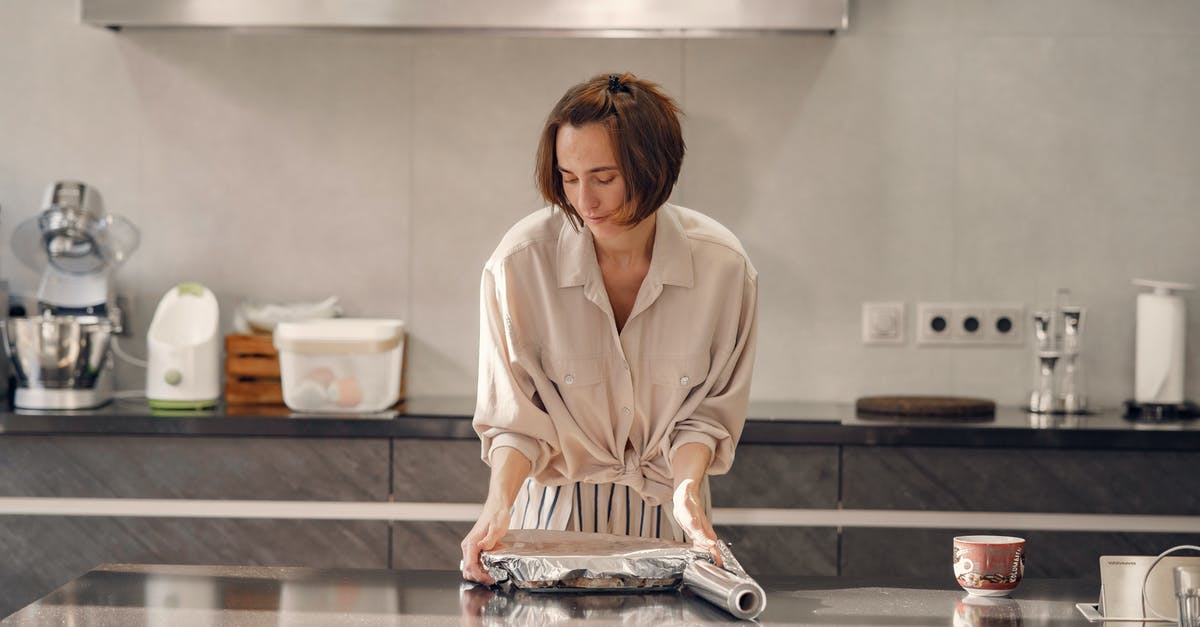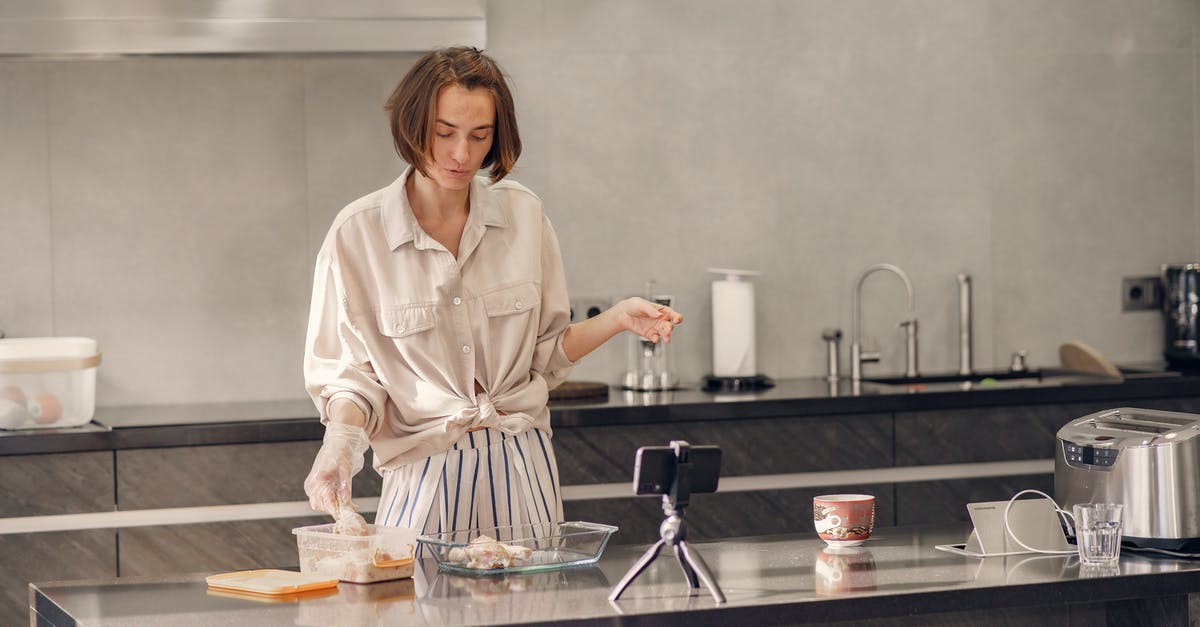What does tin foil do when baking a pot pie?

If you buy a pot pie at the store, the cooking instructions say to fold a strip of tinfoil around the edge before putting it in the oven. I've seen what happens if I forget to do this: the edge gets all burned. Apparently the foil helps keep some of the heat off.
Something strange happened to a friend of mine a while ago, though: she had never made one of these before, and she misread the instructions and put a sheet of tinfoil over the entire top of the pie. It turned into a bit of a mess; after baking, the whole thing was only about half cooked!
That makes me wonder: what exactly is the foil doing? It's nice and shiny, and if this were being cooked under a really powerful heat lamp I could understand how it would reflect a lot of the light away, but this is a conventional oven. Heat is transferred from the air into the food by convection, and aluminum is a very good conductor of heat, so intuitively I'd think it would do practically nothing at all to keep the heat off. But clearly it's actually being very effective, so what's going on?
Best Answer
There are three modes of transfer of heat, as you already mentioned: convection, conduction and radiation. In everyday life, practically all heat sources employ all three of them, although the ratios differ. You certainly have all three of them in an oven.
The foil slows down all three modes of heat transfer, but not equally. First, it is intransparent (or nearly so) for infrared. So, the whole infrared component is practically eliminated. This comes in very handy when you happen to have food whose surface is already well browned but the inside is not yet ready: you cover with foil on top and continue baking.
The convection is also made much less efficient. Normally, the oven heats the air near the top and the bottom, the air in the oven moves around due to a heat gradient and frequently a ventilator, and so you get hotter air surrounding your food, ready to conduct heat to it. When you cover your food in foil, the hottest air cannot reach the food while it moves around. The only air touching the food is the one trapped under the foil, and that never goes to the heater.
Third, there is conduction. Conduction is never perfectly efficient. So instead of having the air conduct heat to your food, you have the air conduct heat to the foil, and then the foil conduct heat partly to the food itself (where it's touching it) and partly to the air trapped inside, which then conducts to the food. Now, instead of one energy-loss step, you have two or three of them. "Good conductor" means that this loss is less than with other materials, but it is not zero.
Then you get a ton of other, more complicated effects. When you bake food, moisture evaporates from the surface. If it gets trapped below a foil, you have a much moister environment, and get a different baking result than without the trapping (although that one is mostly noticeable in the baked surface and less in the centre of the baked or roasted food).
So, physics easily explain that indeed, adding a sheet of foil (or other material) will give you very different results from "naked" baking.
Pictures about "What does tin foil do when baking a pot pie?"



Quick Answer about "What does tin foil do when baking a pot pie?"
The foil has protected crust from burning, allowing the center crust to brown and the inside of the pie to reach the recommended internal cooking temperature.What does covering a pie with foil do?
To prevent the crust from burning, you can cover it with aluminum foil so that the heat does not contact the crust directly. This will allow you to monitor the pie while it bakes to keep the crust a golden brown. Cover a pie crust with aluminum foil to prevent it from burning.Should I cook pie in foil?
For filled double-crust pies, increase the baking time by up to 10 minutes and cover the top of the pie with aluminum foil if it starts to get too dark. Place aluminum pie plates on a preheated baking sheet for a well-browned bottom crust and for added stability when moving pies out of the oven.Should you cover a pie with foil when baking?
Say No to Foil Along the Edges Most people baking a pie tend to just haphazardly scrunch up some strips of aluminum foil all around the edges of the pie. The idea here is that it will heat the edges from the pie without it winding up crispy and burnt.Aluminum Foil Pans for Pot Pies
More answers regarding what does tin foil do when baking a pot pie?
Answer 2
Most metal (Aluminium especially!) ist not just intransparent as rumtscho says - it is reflective in the far infrared (vulgo heat radiation), and does not radiate much if it is heated - if you ever played with a thermal imager you know how confusing aluminium surfaces in a room can become, they appear cold but at the same time they behave like mirrors in which you see other hot objects. So heat only leaves or enters the aluminium much via conduction or convection. Most glass, by the way, looks to heat radiation like a black object to visible light - it will absorb the radiation and get hot while appearing completely opaque. Materials that are actually transparent to heat radiation are usually quite rare and not found in a kitchen with one exception: Salt. So there might be unexpected uses for these hip salt slabs... BTW, a sheet of metal will behave just the same with electricity: If you run a wire to and from it it will conduct, but radio waves ... which heat radiation and light are :) ... tend to get shielded (not in all cases unless an object is surrounded by the metal, the physics get far more complex there).
Answer 3
Y'all got too deep lol the aluminum just slows down the heating process on the crust, aluminum foil doesn't get hot
Sources: Stack Exchange - This article follows the attribution requirements of Stack Exchange and is licensed under CC BY-SA 3.0.
Images: ANTONI SHKRABA production, Gustavo Fring, Gustavo Fring, Gustavo Fring
